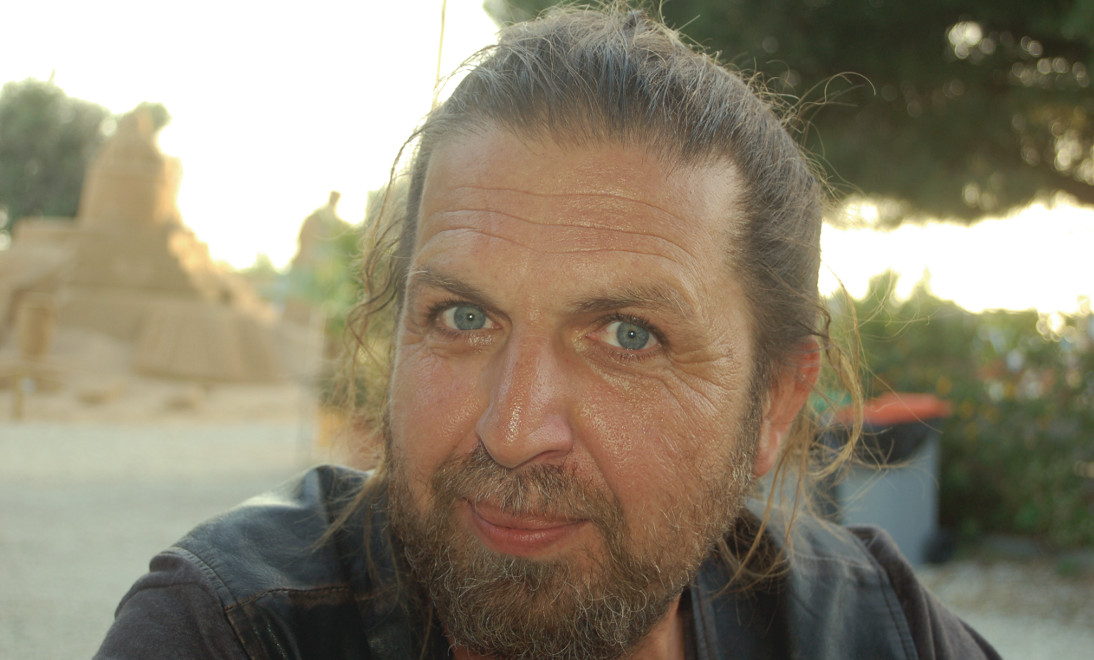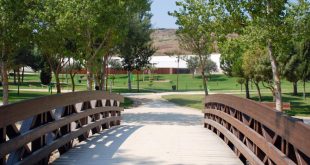You’ve travelled the world. Why did you choose to live in the Algarve?
I arrived in Monchique after spending 15 years travelling with a backpack. Throughout my travels, I only ever bought a single ticket, but that changed when I arrived in the Algarve (laughs). I was with someone who lived in Monchique and I ended up staying. The same year, I started doing sand sculptures in countries like Belgium and Spain, and also in Albufeira. It was 1998 and I thought of staying because I liked, and still like, Portugal. Five years later, I started the FIESA project.
Tell us about your projects.

I have two major projects for the near future, one of them will be the opening of a new venue in Lagoa, bigger than FIESA, which is awaiting approval by the municipality’s Master Development Plan. It will be called MAE (Museum of Art and Entertainment). It is a name I like because it relates to “mãe” (mother) as the protector of the earth. My idea was to create a place that was different from FIESA and focuses more on land-art, sculptures in wood, with trees, with water…
The other project is of a different kind and I’ve been thinking about it for around ten years. I would like to create a community of people who I can start something new with, something that gets away from the commercial idea and distances itself from money as a means of exchange. In the past, I lived in similar places and now I want to create my own space. Living with a group of people who work towards a common objective, a kind of utopia, it’s an old dream of mine.
Why not integration into another community?
My main motivation is to change something in the world, to have a concrete idea about what we are going to do. In other projects, people almost live in a way that escapes from problems. And I don’t think like that.
My aim is to create a community where it is possible to work outside… to have a school for the children, a local television station which shows activities in the morning such as yoga, and in the afternoon a conference, a programme.
I visited the Alqueva Dam with Cristina, my wife, and I found incredible places to put this dream into practice.
FIESA has been going for 15 years and the sand that is used is still the sand that started the project in 2003. Is this your idea of recycling?
Yes, that’s very important. From year to year, we don’t produce any waste. We just destroy the sculptures at the end of the season and start rebuilding them.
This project demonstrates that it’s possible to develop a tourism business that operates in a sustainable manner. Is this environmental policy also applied in other parts of FIESA, for example in the bar? Do you have projects for reducing or eliminating the production of rubbish (plastic and similar items)?
That is our aim, yes. In the future, we would like to have a policy of general recycling, with zero production of rubbish.
How many staff does FIESA employ?
At present 15, a number that increases every year during the time the sculptures are being built. This year we have a staff of 25 – but we have had 60 working there – the 14 sculptors worked for two weeks on the theme of the Seven Arts. The week before they arrive, the area is prepared, the sand is pressed and put in the boxes, and the lighting system is designed.
How many months of work are we talking about?
Five months exhibiting, plus one or two of preparation. The exhibition opens in May and ends in October. It’s a safer month than March because rain can be a major enemy during the construction period. If the work is finished and dry, an organic glue is applied and the sculptures are protected, but if not, it’s a disaster. Last year we had around 120,000 visitors.
Do you think of FIESA as art or entertainment?
It can be seen as art, but my motivation is to provide a moment of entertainment. Having a specific working area and sculptures on one topic can be limiting for an artist. In the near future, we will have a space for this freer type of work.
Do you think of yourself as an artist or a businessman?
At the moment, a businessman. But basically I don’t feel that I belong under that label. Before starting this project, I had never worked more than 20 days per year. When I left my country at the age of 21, I earned a living with my guitar, and I never needed more. If I managed to create a sculpture in one week, I would certainly not stay for six months. And this project was born with the same philosophy. For that reason it was conceived for one year, or a maximum of two years.
Did you study a subject in the field of the arts?
I studied engineering, but I left university in my fourth year because I spent my life with my band, playing in clubs and giving concerts. And, because I missed classes, the only option was military service. That’s how the rules are in Turkey, you even lose your passport. So, before that happened, I managed to get a job in Scotland working with disabled children.

Portugal is not your country…
No, I’m Turkish, but I feel almost like a Portuguese citizen. I visit the country from time to time to see friends or my parents, but if I tried to return to Turkey, which is a country I love and where I grew up, I would probably want to return to Portugal.
At the start of our conversation, you mentioned that, when you arrived in Monchique, you were a different person. Was it easier to be happy in those days?
At the beginning it was easier, yes. In the first place because I had no objects that belonged to me or that I had to look after; I had no real obligations, such as a child or a family. And these things started to arrive, life changed. I changed my life, I started a business. I now have a son. And that is very powerful, it changes a lot of things. That freedom that I knew is not possible at the moment.
What do you really need to be happy?
For me, happiness is not something concrete, it’s a state of mind, something that is hard for each of us to achieve. What makes me happy might not be what makes another person happy. There are lots of things that prevent us achieving this state of mind.
Despite everything, I’m aware that I don’t need much to be happy, but, as the years pass, with an increase in obligations and responsibilities, it becomes increasingly difficult to achieve this internal peace that I had when I arrived in Monchique, after 15 years travelling the world with a backpack.
Do you not achieve happiness through work or your family?
We can achieve happiness from many things, but, for me, happiness is something different, much more personal.
First of all, it is essential to have a collective consciousness, because even if I feel very happy, if there are people beside me who are not, that will influence me. It is also necessary to organise the world. If I am on the path to happiness, I will also need to listen to my heart, my body; capturing positive things from all around, because, if we listen carefully, happiness can be everywhere.
What are your beliefs?
I believe that there is much more beyond what we feel. Everything in the world is to do with harmony.
If you had the opportunity to spend days in a white room…
That would be very pleasant. I have done vipassana meditation retreats (1) about four times in my life and they were very productive moments for me. Meditating for ten days, not looking at or talking to anyone… When you break this, on the eleventh day, here inside, it’s an incredible feeling, really good.
Happiness is that moment, but it’s very subtle. You cannot keep or extend that sensation for more than two or three days.
As Buddha said, everyone can come with me. You will need ten days to sit down to be able to see. For that reason, in the future, if I have the opportunity, I would like to continue that experience.
What do you fear most?
I am afraid that there may be no way out for the confusion in this world. But it is better to be positive. There are few of us, we need to unite and do something!
Thank you.
 Eco123 Revista da Economia e Ecologia
Eco123 Revista da Economia e Ecologia

